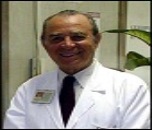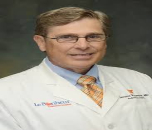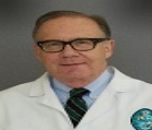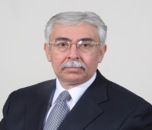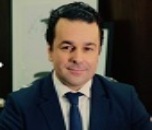Theme: “Gaining a broader practical understanding of global approaches used in Anesthesiaâ€
Anesthesia 2021
Anesthesia 2021:
Organizing Committee invites all the participants from all over the world to attend “6th International Conference on Anesthesia” during September 22-23, 2021 in Zurich, Switzerland on the theme“Gaining a broader practical understanding of global approaches used in Anesthesia” which includes prompt Keynote presentations, Oral talks, Poster presentations and Exhibitions.
Anesthesia 2021 which aims to gather the most elegant societies and industries along with the renowned and honorable persons form top universities across the globe. Anesthesia 2021 on behalf of its organizing Committee welcomes all the Anesthesia and Anesthesiology researchers, industrialists, doctors, young scientists as well as student and corporate delegates to participate and to have a great experience. During Anesthesia conferences, the International symposiums, B2B meetings, international workshops will also be organized to discuss the specific topics in the field of Anesthesia and Anesthesiology. The conference also welcomes International exhibitions from corporate sectors to showcase the recent advancements in tools and techniques. Conferences Series organizes a 1000+ Global Events inclusive of 300+ Conferences, 500+ Upcoming and Previous Symposiums and Workshops in Europe, Asia, USA and Middle East with support from 1000 more scientific societies and publishes 700+ Open access journals which contains over 30000 eminent personalities, reputed scientists as editorial board members.
Why to attend:
Anesthesia 2021 is an international platform for presenting research about diagnosis, prevention and management and exchanging ideas about it and thus, contributes to the dissemination of knowledge in Anesthesia and Anesthesiology for the benefit of both the academia and business.
The organizing committee of this Anesthesia and Anesthesiology Conference is gearing up for an exciting and informative conference program including plenary lectures, symposia, workshops on a variety of topics, poster presentations and various programs for participants from all over the world. We invite you to join us at the Anesthesia 2021, where you will be sure to have a meaningful experience with scholars from all around the world. All members of the Anesthesia 2021 Conference and Organizing Committee look forward to meeting you in Zurich, Switzerland.
About City:
The city of Zurich, a global center for banking and finance, lies at the north end of Lake Zurich in northern Switzerland. The picturesque lanes of the central Altstadt (Old Town), on either side of the Limmat River, reflect its pre-medieval history. Waterfront promenades like the Limmatquai follow the river toward the 17th-century Rathaus (town hall).With its location right in the heart of Switzerland, Zurich is a modern, cosmopolitan hub that is regularly ranked as one of the world's top cities for quality of life. It's also considered Switzerland's trend-setting city thanks to its highly innovative arts and creative scene.
Zurich Attractions:
- Old Town
- Uetliberg
- Lake Zürich and Bürkliplatz
- Kunsthaus Zürich (Museum of Fine Arts)
- Fraumünster
- Limmatquai and the Rathaus (Town Hall)
- Schweizerisches Landesmuseum (Swiss National Museum)
- Grossmünster (Great Minster)
- Rietberg Museum
- St. Peter's Church
- Confiserie Sprüngli: A Confectioner's Café
Target Audience:
- Anaesthesiologist
- R&D Companies
- Healthcare companies
- Entrepreneurs
- Research Scholars
- Scientist
- Healthcare Innovators
- Physician
- Clinical Researchers
- Life Science Investors
- Policymakers and Regulators
- Professional Service Professionals
- Academic Researchers
Sessions:
- Anesthetics
- Sedation
- Ambulatory Anesthesia
- Pediatric Anesthesia
- Spinal Anesthesia
- Epidural Anesthesia
- Anesthetic Adjunct
- Steroid Anesthetics
- Benefits of Anesthesia
- Anesthesia Equipment
- Anxiolytics
- Paralytics
- Narcotics
- Pain
- Analgesia
- NSAIDs
- Amnesia
- Postoperative Nausea and Vomiting
- Acute Stress Response
- Peripheral Nerve Block
- Mortality
- Emergence
- Coma
- Animal Anesthesia
Track 1: Anesthetics
An anesthetic is a medication to prevent pain during surgery, completely hindering any inclination rather than a pain relieving. A wide assortment of medications is utilized as a part of present day sedative practice. Numerous are once in a while utilized outside anesthesia, in spite of the fact that others are utilized ordinarily by all controls. Anesthetics are classified into two classes: general anesthetics, which cause a reversible loss of consciousness, and local anesthetics, which cause a reversible loss of sensation for a restricted region of the body. Combinations of analgesics are here and there utilized for their synergistic and added substance restorative impacts. Adverse effects however may be increased.
Related Societies:
American Societies: Wisconsin Society of Anesthesiologists | Wyoming Society of Anesthesiologists | Uniformed Services Society of Anesthesiologists | West Virginia State Society of Anesthesiologists | Vermont Society of Anesthesiologists | Utah Society of Anesthesiologists
European Societies: Age Anaesthesia Association | Anaesthetic Research Society | Anaesthesia Research Trust | Association for Cardiothoracic Anaesthetists | Association of Paediatric Anaesthetists | British Association for Immediate Care
Asian Societies: Bangladesh Society of Anesthesiologists | Chinese Society of Critical Care Medicine | Indian Society of Critical Care Medicine | The Saudi Critical Care Society | Vietnam Association of Emergency Critical Care Medicine and Medical Toxicology | Association of Anesthesiologists-Intensivists
Related Journals: Analgesia & Resuscitation: Current Research, Anesthesiology Communications International , Journal of Anesthesiology & Pain Medicine, Journal of Anesthesia & Clinical Research , Journal of Clinical Anesthesiology
Related Companies: Omnicell Inc, Coast to Coast Medical | Medex Supply Distributors Inc. | Anesthesia Service, Inc. | MedSurg Equipment LLC
Track 2: Sedation
Sedation is the lessening of irritability or distress by administration of sedative medications, generally to facilitate a medicinal method or diagnostic system. Cases of medications which can be utilized for sedation include isoflurane, propofol, ketamine, lorazepam and midazolam . Sedation is regularly utilized as a part of minor surgeries, for example, endoscopy, vasectomy, or dentistry and for reconstructive medical procedure, couple of corrective medical procedures, evacuation of knowledge teeth, or for high-uneasiness patients. Sedation approaches in dentistry incorporate include inhalational sedation (utilizing nitrous oxide), oral sedation, and intravenous sedation. Inhalation sedation is additionally at times expressed to as relative analgesia. Sedation is additionally utilized broadly in the emergency unit for patients who are being ventilated tolerate having an endotracheal tube in their trachea. Additionally can be utilized as a part of a long term brain EEG to enable patient to relax.
Related Societies:
American Societies: Texas Society of Anesthesiologists | American Academy of Anesthesiologists Assistants | American American Academy of Pain Management | American American Association of Nurse Anesthetists | American American Chronic Pain Society | American Medical Informatics Association
European Societies: British Association of Orthopaedic Anaesthetists | British Medical Acupuncture Society | Committee of Anaesthetists in Training of Sheffield | Critical Care UK | East Anglia Intensive Care Group | History of Anaesthesia Society
Asian Societies: Asian Society of Cardiothoracic Anesthesia | Malaysian Society of Anaesthesiologists | Chinese Society of Anesthesiology | Asian Society of Paediatric Anaesthetists | The Australian Society of Anaesthetists | Australian Society of Anaesthesia Paramedical Officers
Related Journals: Journal of Headache & Pain Management, Journal of Pain & Relief, Journal of Pain Management & Medicine, Journal of Perioperative Medicine, Journal of Surgery and Anesthesia
Related Companies: MedSurg Equipment LLC | Physicians Resource Network Inc | Metropolitan Medical Services | HK Surgical, Inc.| Sharn, Inc.
Track 3: Ambulatory Anesthesia
Ambulatory Anesthesia involves simple surgical procedures that are expected to have minimal effects on a patient's body functions and cause mild pain that can easily be controlled with oral medication. Ambulatory anesthesia patients typically go home on the same day of their surgery, unless closer observation is needed. Short-acting anesthetics and specialized anesthetic techniques as well as care specifically focused on the needs of the ambulatory patient are used to make your experience safe and pleasant. In general, if you are in sensibly good health, you are a candidate for ambulatory anesthesia and surgery. Because every patient is unique, your anesthesiologist will cautiously evaluate you and your health status to govern if you should undergo ambulatory anesthesia. In most cases, family and friends can provide all the needed assistance. If you do not have family members to help at home, you may oblige additional assistance. Certain ambulatory facilities offer special post-surgical recovery facilities or extended services with nurses who visit you at home. Appropriate pain management will be included as part of your discharge planning.
Related Societies:
American Societies: American Pain Foundation | American Pain Society | American Society of Anesthesia Technologists and Technicians | American Society of Anesthesiologists | American Society of Critical Care Anesthesiologists | Malignant Hyperthermia Association US
European Societies: Intensive Care Society | Neuroanaesthesia Society of Great Britain & Ireland | Northern Ireland Society for Computing in Anaesthesia | Obstetric Anaesthetists Association | Plastic Surgery and Burns Anaesthetists | Resusciation Council, UK
Asian Societies: Australian Society of Post Anaesthesia and Anaesthesia Nurses | Israel Society of Anesthesiologists | Japanese Society of Anesthesiologists | Azerbaijan Medical Association | All India Difficult Airway Association, Airway Management | Bangladesh Society of Anaesthesiologists
Related Journals: British Journal of Anesthesia, Canadian Journal of Anesthesia, Current Opinion in Anesthesiology, Current Opinion in Critical Care, European Journal of Anaesthesiology
Related Companies: AUG MEDICAL | PneumaGlide, P.C | Medical Resources | LMA North America , Inc. | Smiths Medical ASD, Inc. | Smiths Medical
Track 4: Pediatric Anesthesia
Pediatric anesthesia has become an increasingly important aspect of anesthesiology generally and of pediatric surgery specifically. Recent advances in pediatric surgery make it mandatory that anesthesiologists, pediatricians and surgeons carefully assess the anesthetic agents and technics which will be most effective in infants and children. Anesthetic workplace to be used for pediatric anesthesia needs to meet various prerequisites and must consider over the extraordinary physiological parts of the different age groups of adolescents, from premature infants to class youngsters. Various factors play a key role in the paediatric anesthesia like airway and respiratory system, cardiovascular system, renal system, hepatic system, glucose metabolism, haematology, temperature control, central nervous system, psychology. Various evidences are done for anesthetizing children like the pre-operative visit, pre-operative abstaining and pre medication.
Related Societies:
American Societies: National Chronic Pain Outreach Association | Ophthalmic Anesthesia Society | Society for Computing in Anesthesiology | Society for Obstetrical Anesthesia and Perinatology | Society for Office Based Anesthesia | Society for Technology in Anesthesia
European Societies: Royal College of Anaesthetists including information on training in Intensive Care medicine | Royal College of Surgeons of Ireland | Society for Computing and Technology in Anaesthesia | Society for Intravenous Anaesthesia, UK | South West School of Anaesthesia - Plymouth, Exeter, Truro, Taunton and Torbay | The Association of Theatre Personnel Nationwide
Asian Societies: Myanmar Society of Anaesthesiologists | Chinese Society of Anesthesiology | Asia Pacific Paediatric Endocrine Society | Obesity & metabolic Surgery Society of India | Vietnam Society of Anaesthesiologists | Indian Society of Anaesthesiologists
Related Journals: International Journal of Obstetric Anesthesia, Journal of Anaesthesiology Clinical Pharmacology, Journal of Anesthesia, Journal of Cardiothoracic and Vascular Anesthesia, Journal of Clinical Anesthesia
Related Companies: Becton Dickinson and Company | Alpha Source Inc | Somnia Anesthesia,Inc. | Trident Manufacturing, Inc. | Westmed, Inc.
Track 5: Spinal Anesthesia
Spinal anesthesia, also called as spinal block, subarachnoid block, intradural block and intrathecal block, is a type of local anesthesia including the infusion of a local anesthetic into the subarachnoid space, for the most part through a fine needle, more often than not 9 cm (3.5 in) long. For obese patients longer needles are accessible (12.7 cm/5 inches). The tip of the spinal needle comprises a point or tiny bevel. Now-a-days, pencil point needles have been made accessible (Whitacre, Sprotte, Gertie Marx and others). Spinal anesthesia is a usually utilized approach, either all alone or in blend with sedation or general anesthesia.
Related Societies:
American Societies: Texas Society of Anesthesiologists | American Academy of Anesthesiologists Assistants | American American Academy of Pain Management | American American Association of Nurse Anesthetists | American American Chronic Pain Society | American Medical Informatics Association
European Societies: British Association of Orthopaedic Anaesthetists | British Medical Acupuncture Society | Committee of Anaesthetists in Training of Sheffield | Critical Care UK | East Anglia Intensive Care Group | History of Anaesthesia Society
Asian Societies: Asian Society of Cardiothoracic Anesthesia | Malaysian Society of Anaesthesiologists | Chinese Society of Anesthesiology | Asian Society of Paediatric Anaesthetists | The Australian Society of Anaesthetists | Australian Society of Anaesthesia Paramedical Officers
Related Journals: Journal of Headache & Pain Management, Journal of Pain & Relief, Journal of Pain Management & Medicine, Journal of Perioperative Medicine, Journal of Surgery and Anesthesia
Related Companies: MedSurg Equipment LLC | Physicians Resource Network Inc | Metropolitan Medical Services | HK Surgical, Inc.| Sharn, Inc.
Track 6: Epidural Anesthesia
Epidural anesthesia is a type of neuraxial anesthesia; local anesthetic (LA) is injected into the epidural space to anesthetize the spinal nerve roots that traverse the space. Epidural anesthesia is used for anesthesia of abdominal, pelvic, and lower extremity procedures and, less commonly, thoracic procedures. It may be used to supplement general anesthesia for thoracic, abdominal, and pelvic procedures and for postoperative analgesia following these procedures. The usual technique involves siting a catheter in the epidural space. LA solution and adjuvants are administered through the catheter, both to initiate and maintain anesthesia for the duration of the surgical procedure.
Related Societies:
American Societies: Society of Cardiovascular Anesthesiologists | Society of Critical Care Medicine | Wisconsin Society of Anesthesiologists | Wyoming Society of Anesthesiologists | Uniformed Services Society of Anesthesiologists | Vermont Society of Anesthesiologists
European Societies: The National Difficult Airway Society | The Pain Society | Vascular Anaesthesia Society of Great Britain and Ireland | Neuroanaesthesia Society of Great Britain & Ireland | British Association for Immediate Care | Anaesthesia Research Trust
Asian Societies: Indian Society of Neuro anaesthesiology and Critical Care | Singapore Society of Anaesthesiologists | Malaysian Society of Anaesthesiologists | College of Anaesthesiologists and Intensivists of Sri Lanka | Saudi Anaesthetic Association | Association of Anesthesia of the Republic of Angola
Related Journals: Journal of Critical Care, Journal of Intensive Care Medicine, Journal of Neurosurgical Anesthesiology, Local and Regional Anesthesia, New England Journal of Medicine
Related Companies: Anesthesia Plus | TRICOR Systems Inc.| NACS ,Inc. | VETEQUIP Inhalational Anesthesia Systems | Bell Medical Inc.
Track 7: Anesthetic Adjunct
The field of anesthesia is now 150 years old and consists of inhalation, parenteral, and local anesthetics, as well as anesthetic adjunct agents that can improve the quality and reduce the side effects of the anesthetic procedure. While anesthetics, based on their diverse structures and side-effect profiles, were thought to produce their effects by a simple perturbation of the lipid/protein components of the cell membrane – the unitary theory of anesthesia – recent findings suggest that there may indeed be discrete targets for anesthetic effects. These include a variety of voltage-gated ion channels, including those for potassium, calcium, and sodium, as well as the γ-amino butyric acidA (GABAA), N-methyl-d-aspartate (NMDA), and neuronal nicotinic ligand-gated ion channels.
Related Societies:
American Societies: National Chronic Pain Outreach Association | Ophthalmic Anesthesia Society | Society for Computing in Anesthesiology | Society for Obstetrical Anesthesia and Perinatology | Society for Office Based Anesthesia | Society for Technology in Anesthesia
European Societies: Royal College of Anaesthetists including information on training in Intensive Care medicine | Royal College of Surgeons of Ireland | Society for Computing and Technology in Anaesthesia | Society for Intravenous Anaesthesia, UK | South West School of Anaesthesia - Plymouth, Exeter, Truro, Taunton and Torbay | The Association of Theatre Personnel Nationwide
Asian Societies: Society of Anesthesia-Reanimation of Benin | Botswana Society of Anaesthetists | Kenya Society of Anaesthesiologists | Society of Anaesthesiologists, Brunei Darussalam | Society of Anesthesia, Resuscitation and Emergency Medicine of Burkina Faso | Cameroonian Society of Anesthesia Reanimation
Related Journals: International Journal of Obstetric Anesthesia, Journal of Anaesthesiology Clinical Pharmacology, Journal of Anesthesia, Journal of Cardiothoracic and Vascular Anesthesia, Journal of Clinical Anesthesia
Related Companies: First American Equipment Finance | Formerly Moduflex Anesthesia Equipment, Inc. | ANESTHESIA ASSOCIATES,Inc. | Meditek | Intersurgical Ltd
Track 8: Steroid Anesthetics
Many artificial neurosteroids have been utilized as analgesics for the purpose of general anesthesia during surgeries. The finest known about these are alphaxolone, alphadolone, hydroxydione and minaxolone. The first of these to be introduced was hydroxydione, which is the esterified 21-hydroxy subsidiary of 5β-pregnanedione. Hydroxydione turned out being a useful narcotic prescription with a commendable safety profile, yet was agonizing and alarming when implanted probably due to poor water solvency. This paved a way to the evolution of new neuroactive steroids. The accompanying medication from this family to be advanced was a combination of alphaxolone and alphadolone, known as Althesin.
Related Societies:
American Societies: American Pain Foundation | American Pain Society | American Society of Anesthesia Technologists and Technicians | American Society of Anesthesiologists | American Society of Critical Care Anesthesiologists | Malignant Hyperthermia Association US
European Societies: Intensive Care Society | Neuroanaesthesia Society of Great Britain & Ireland | Northern Ireland Society for Computing in Anaesthesia | Obstetric Anaesthetists Association | Plastic Surgery and Burns Anaesthetists | Resusciation Council, UK
Asian Societies: Association of Anesthesiologists of El Salvador | Ethiopian Society of Anaesthesiologists | Ghana Anaesthetist Society | Indonesian Society of Anesthesiologists and Intensive Therapy | Jordan Society of Anaesthesia and Intensive Care | Society of Anaesthesiologists of Nepal
Related Journals: Journal of Critical Care, Journal of Intensive Care Medicine, Journal of Neurosurgical Anesthesiology, Local and Regional Anesthesia, New England Journal of Medicine
Related Companies: Beahm Designs, Inc. | Confluent Medical Technologies | Argon Medical Devices, Inc | CADENCE, INC.| MFI Medical
Track 9: Propofol
Propofol, marketed as Diprivan, is a short-acting medication that results in diminished level of consciousness and absence of memory of the events. Its uses include the initiation and maintenance of general anesthesia, sedation for involuntarily ventilated adults, and procedural sedation. It is also used for status epilepticus if other medications have not worked. It is given by injection into a vein. Maximum effect takes about two minutes to occur and it typically lasts five to ten minutes.
Related Societies:
American Societies: Wisconsin Society of Anesthesiologists | Wyoming Society of Anesthesiologists | Uniformed Services Society of Anesthesiologists | West Virginia State Society of Anesthesiologists | Vermont Society of Anesthesiologists | Utah Society of Anesthesiologists
European Societies: Age Anaesthesia Association | Anaesthetic Research Society | Anaesthesia Research Trust | Association for Cardiothoracic Anaesthetists | Association of Paediatric Anaesthetists | British Association for Immediate Care
Asian Societies: Nigerian Society of Anesthesia, Reanimation and Emergency Medicine | Pakistan Society of Anaesthesiologists | Palestinian Society of Anaesthesia & Intensive Care | Panamanian Society of Anesthesiology Russian Federation of Anaesthesiologists and Reanimatologists | Sudanese Society of Anaesthesiologists | Society of Anaesthetists of Zambia
Related Companies: MERCO BIOMEDICAL | Mac Medical Supply Company Inc. | Dameca Medical supplies | Converter Accessory Corporation | Advanced Infusion Inc
Track 10: Benefits of Anesthesia
General anesthesia decreases the intraoperative patient awareness and review, it permits the best possible muscle unwinding for the drawn out time frames. It facilitates complete control of the airway, the breathing, and the circulation, it can be utilized as a part of sensitivity of local anesthetic agent and it can be given without moving the patient from the prostrate position. The local anesthesia infusion numbs only the particular region of your body requiring minor surgery (desensitizing the small area). The symptoms of local anesthesia infusion are insignificant and they are identified with how much the anesthesia is infused.
Related Societies:
American Societies: Texas Society of Anesthesiologists | American Academy of Anesthesiologists Assistants | American American Academy of Pain Management | American American Association of Nurse Anesthetists | American American Chronic Pain Society | American Medical Informatics Association
European Societies: British Association of Orthopaedic Anaesthetists | British Medical Acupuncture Society | Committee of Anaesthetists in Training of Sheffield | Critical Care UK | East Anglia Intensive Care Group | History of Anaesthesia Society
Asian Societies: Asian Society of Cardiothoracic Anesthesia | Malaysian Society of Anaesthesiologists | Chinese Society of Anesthesiology | Asian Society of Paediatric Anaesthetists | The Australian Society of Anaesthetists | Australian Society of Anaesthesia Paramedical Officers
Related Journals: Journal of Headache & Pain Management, Journal of Pain & Relief, Journal of Pain Management & Medicine, Journal of Perioperative Medicine, Journal of Surgery and Anesthesia
Related Companies: MedSurg Equipment LLC | Physicians Resource Network Inc | Metropolitan Medical Services | HK Surgical, Inc.| Sharn, Inc.
Track 11: Anesthesia Equipment
Anesthesia equipment is often utilized by medical experts during surgeries to help keep a patient from feeling pain and relax encircling muscles. Many a times, anesthesia can make a patient sleepy or even oblivious, both of which are totally typical responses to the medication. During the technique, an anesthesiologist will screen the patient's vitals to assure their well-being, and furthermore direct the dose of anesthesia being managed. Be that as it may, doing both at the same time can be troublesome if a monitoring equipment is obsolete or not easy to understand.
Related Societies:
American Societies: Texas Society of Anesthesiologists | American Academy of Anesthesiologists Assistants | American American Academy of Pain Management | American American Association of Nurse Anesthetists | American American Chronic Pain Society | American Medical Informatics Association
European Societies: British Association of Orthopaedic Anaesthetists | British Medical Acupuncture Society | Committee of Anaesthetists in Training of Sheffield | Critical Care UK | East Anglia Intensive Care Group | History of Anaesthesia Society
Asian Societies: Syrian Society of Anesthesiologists | Royal College of Anesthesiologists of Thailand | Society of Anaesthesiologists of Tanzania | Association of Anaesthesiologists of Uganda | Zimbabwe Anaesthetic Association | Ghana Anaesthetist Society | Society of Anaesthesiologists of Nepal
Related Journals: Journal of Critical Care, Journal of Intensive Care Medicine, Journal of Neurosurgical Anesthesiology, Local and Regional Anesthesia, New England Journal of Medicine
Related Companies: ARC Medical Inc | Blue Bell Bio-Medical Inc | BC Group International Inc. | Spacelabs Healthcare | Big Sea Medical
Track 12: Anxiolytics
An anxiolytic or antianxiety agent is a medicine that hinders anxiety. This effect is relatively different than anxiogenic agents, which increase anxiety. Together these classifications of psychoactive compounds or mediations might be alluded to as anxiotropic mixes or operators. Some recreational medications, for example, alcohol (formally referred as ethanol) include anxiolytics at first; in any case, studies demonstrate that a considerable lot of these medications are anxiogenic. Anxiolytic medicines have been utilized for the treatment of anxiety issues and its related pschycolgical and physical symptoms. Light therapy and other interventions have additionally been found to have an anxiolytic impact. Beta-receptor blockers such as, propranolol and oxprenolol, despite the fact that not anxiolytics, can be utilized to fight the substantial indications of anxiety, for example, tachycardia and palpitations. Anxiolytics are otherwise called minor sedatives.
Related Societies:
American Societies: National Chronic Pain Outreach Association | Ophthalmic Anesthesia Society | Society for Computing in Anesthesiology | Society for Obstetrical Anesthesia and Perinatology | Society for Office Based Anesthesia | Society for Technology in Anesthesia
European Societies: Royal College of Anaesthetists including information on training in Intensive Care medicine | Royal College of Surgeons of Ireland | Society for Computing and Technology in Anaesthesia | Society for Intravenous Anaesthesia, UK | South West School of Anaesthesia - Plymouth, Exeter, Truro, Taunton and Torbay | The Association of Theatre Personnel Nationwide
Asian Societies: Society of Anesthesia-Reanimation of Benin | Botswana Society of Anaesthetists | Kenya Society of Anaesthesiologists | Society of Anaesthesiologists, Brunei Darussalam | Society of Anesthesia, Resuscitation and Emergency Medicine of Burkina Faso | Cameroonian Society of Anesthesia Reanimation
Related Journals: International Journal of Obstetric Anesthesia, Journal of Anaesthesiology Clinical Pharmacology, Journal of Anesthesia, Journal of Cardiothoracic and Vascular Anesthesia, Journal of Clinical Anesthesia
Related Companies: Formerly Moduflex Anesthesia Equipment, Inc. | ANESTHESIA ASSOCIATES,Inc. | Meditek | Intersurgical Ltd | First American Equipment Finance
Track 13: Narcotics
The term narcotic term signifies "to make numb" initially alluded therapeutically to any psychoactive compound with sleep inducing properties. In the United States, it has since moved toward becoming related with sedatives, opioids, commonly morphine and heroin, and also subsidiaries of a large number of the compounds found with crude opium latex. The essential three are morphine, codeine, and thebaine (while thebaine itself is just somewhat psychoactive, it is a significant forerunner in most by far of semi-engineered opioids, for example, oxycodone). Legally, the term "narcotic" is loosely characterized and regularly has negative implications. At the point when utilized as a part of a lawful setting in the U.S., a narcotic drug is one that is completely denied, for example, heroin, or one that is utilized as a part of infringement of legislative direction. In the medical community, the term is all the more definitely characterized and for the most part does not convey similar negative undertones. Statutory arrangement of a medication as a narcotic frequently expands the penalties for infringement of drug control statutes.
Related Societies:
American Societies: Society of Cardiovascular Anesthesiologists | Society of Critical Care Medicine | Wisconsin Society of Anesthesiologists | Wyoming Society of Anesthesiologists | Uniformed Services Society of Anesthesiologists | Vermont Society of Anesthesiologists
European Societies: The National Difficult Airway Society | The Pain Society | Vascular Anaesthesia Society of Great Britain and Ireland | Neuroanaesthesia Society of Great Britain & Ireland | British Association for Immediate Care | Anaesthesia Research Trust
Asian Societies: Indian Society of Neuro anaesthesiology and Critical Care | Singapore Society of Anaesthesiologists | Malaysian Society of Anaesthesiologists | College of Anaesthesiologists and Intensivists of Sri Lanka | Saudi Anaesthetic Association | Association of Anesthesia of the Republic of Angola
Related Journals: Journal of Critical Care, Journal of Intensive Care Medicine, Journal of Neurosurgical Anesthesiology, Local and Regional Anesthesia, New England Journal of Medicine
Related Companies: Anesthesia Plus | TRICOR Systems Inc.| NACS ,Inc. | VETEQUIP Inhalational Anesthesia Systems | Bell Medical Inc.
Track 14: Paralytics
Neuromuscular-blocking agents also known as paralytics block neuromuscular transmission at neuromuscular junction, causing loss of motion of skeletal muscles. This is accomplished similarly by acting presynaptically through the inhibition of acetylcholine (ACh) synthesis and by acting postsynaptically at the acetylcholine receptors of the motor nerve end-plate. While a few medications act presynaptically, (for example, botulinum toxin and tetanus poison), those of current clinical significance work postsynaptically. Because the appropriate dose of neuromuscular-blocking medication may paralyze muscles required for breathing (i.e., the diaphragm), mechanical ventilation should to be provided to maintain adequate respiration.
Related Societies:
American Societies: National Chronic Pain Outreach Association | Ophthalmic Anesthesia Society | Society for Computing in Anesthesiology | Society for Obstetrical Anesthesia and Perinatology | Society for Office Based Anesthesia | Society for Technology in Anesthesia
European Societies: Royal College of Anaesthetists including information on training in Intensive Care medicine | Royal College of Surgeons of Ireland | Society for Computing and Technology in Anaesthesia | Society for Intravenous Anaesthesia, UK | South West School of Anaesthesia - Plymouth, Exeter, Truro, Taunton and Torbay | The Association of Theatre Personnel Nationwide
Asian Societies: Society of Anesthesia-Reanimation of Benin | Botswana Society of Anaesthetists | Kenya Society of Anaesthesiologists | Society of Anaesthesiologists, Brunei Darussalam | Society of Anesthesia, Resuscitation and Emergency Medicine of Burkina Faso | Cameroonian Society of Anesthesia Reanimation
Related Journals: International Journal of Obstetric Anesthesia, Journal of Anaesthesiology Clinical Pharmacology, Journal of Anesthesia, Journal of Cardiothoracic and Vascular Anesthesia, Journal of Clinical Anesthesia
Related Companies: Formerly Moduflex Anesthesia Equipment, Inc. | ANESTHESIA ASSOCIATES,Inc. | Meditek | Intersurgical Ltd | First American Equipment Finance |
Track 15: Pain
Pain is a distressing feeling frequently caused by extreme or harming stimuli. The International Association for the Study of Pain's broadly used definition defines pain as "an obnoxious sensory and emotional experience associated with actual or potential tissue damage, or portrayed in terms of such damage"; in any case, because of it being a complex, subjective sensation, characterizing pain has been a contest. In restorative conclusion, pain is viewed as a manifestation of a basic condition. It is a major symptom in numerous therapeutic conditions, and can interfere with a person’s quality of life and general functioning.
Related Societies:
American Societies: Society of Cardiovascular Anesthesiologists | Society of Critical Care Medicine | Wisconsin Society of Anesthesiologists | Wyoming Society of Anesthesiologists | Uniformed Services Society of Anesthesiologists | Vermont Society of Anesthesiologists
European Societies: The National Difficult Airway Society | The Pain Society | Vascular Anaesthesia Society of Great Britain and Ireland | Neuroanaesthesia Society of Great Britain & Ireland | British Association for Immediate Care | Anaesthesia Research Trust
Asian Societies: Indian Society of Neuro anaesthesiology and Critical Care | Singapore Society of Anaesthesiologists | Malaysian Society of Anaesthesiologists | College of Anaesthesiologists and Intensivists of Sri Lanka | Saudi Anaesthetic Association | Association of Anesthesia of the Republic of Angola
Related Journals: Journal of Critical Care, Journal of Intensive Care Medicine, Journal of Neurosurgical Anesthesiology, Local and Regional Anesthesia, New England Journal of Medicine
Related Companies: Anesthesia Plus | TRICOR Systems Inc.| NACS ,Inc. | VETEQUIP Inhalational Anesthesia Systems | Bell Medical Inc.
Track 16: Analgesia
Analgesia is the inability to feel pain. An analgesic or painkiller is any member from the group of medications used to accomplish absence of pain, alleviation from pain. Analgesic drugs act in various ways on the peripheral and central nervous systems. They are distinct from anesthetics which temporarily affect, and in some instances completely eliminate sensation. Analgesics comprise paracetamol (known in North America as acetaminophen or simply APAP), the nonsteroidal anti-inflammatory drugs (NSAIDs, for example, the salicylates, and opioid medications, for example, morphine and oxycodone.
Related Societies:
American Societies: National Chronic Pain Outreach Association | Ophthalmic Anesthesia Society | Society for Computing in Anesthesiology | Society for Obstetrical Anesthesia and Perinatology | Society for Office Based Anesthesia | Society for Technology in Anesthesia
European Societies: Royal College of Anaesthetists including information on training in Intensive Care medicine | Royal College of Surgeons of Ireland | Society for Computing and Technology in Anaesthesia | Society for Intravenous Anaesthesia, UK | South West School of Anaesthesia - Plymouth, Exeter, Truro, Taunton and Torbay | The Association of Theatre Personnel Nationwide
Asian Societies: Society of Anesthesia-Reanimation of Benin | Botswana Society of Anaesthetists | Kenya Society of Anaesthesiologists | Society of Anaesthesiologists, Brunei Darussalam | Society of Anesthesia, Resuscitation and Emergency Medicine of Burkina Faso | Cameroonian Society of Anesthesia Reanimation
Related Journals: International Journal of Obstetric Anesthesia, Journal of Anaesthesiology Clinical Pharmacology, Journal of Anesthesia, Journal of Cardiothoracic and Vascular Anesthesia, Journal of Clinical Anesthesia
Related Companies: Formerly Moduflex Anesthesia Equipment, Inc. | ANESTHESIA ASSOCIATES,Inc. | Meditek | Intersurgical Ltd | First American Equipment Finance
Track 17: NSAIDs
Nonsteroidal anti-inflammatory drugs are those which reduce pain, fever, prevent blood clots and in high doses, reduce inflammation. Side effects relay upon the particular medication, yet to a great extent incorporate an expanded danger of gastrointestinal ulcers and bleeds, heart attack and kidney disease. The term nonsteroidal distinguishes these medications from steroids, which while having a comparative eicosanoid-depressing, anti-inflammatory activity, have a wide range of different impacts. There are two types of NSAIDs: non-selective and COX-2 selective. Most NSAIDs are non-selective, and inhibit the activity of both COX-1 and COX-2.To begin with utilized as a part of 1960, the term served to remove these drugs from steroids. NSAIDs work by hindering the activity of cyclooxygenase catalysts (COX-1 as well as COX-2).
Related Societies:
American Societies: Society of Cardiovascular Anesthesiologists | Society of Critical Care Medicine | Wisconsin Society of Anesthesiologists | Wyoming Society of Anesthesiologists | Uniformed Services Society of Anesthesiologists | Vermont Society of Anesthesiologists
European Societies: The National Difficult Airway Society | The Pain Society | Vascular Anaesthesia Society of Great Britain and Ireland | Neuroanaesthesia Society of Great Britain & Ireland | British Association for Immediate Care | Anaesthesia Research Trust
Asian Societies: Indian Society of Neuro anaesthesiology and Critical Care | Singapore Society of Anaesthesiologists | Malaysian Society of Anaesthesiologists | College of Anaesthesiologists and Intensivists of Sri Lanka | Saudi Anaesthetic Association | Association of Anesthesia of the Republic of Angola
Related Journals: Journal of Critical Care, Journal of Intensive Care Medicine, Journal of Neurosurgical Anesthesiology, Local and Regional Anesthesia, New England Journal of Medicine
Related Companies: Anesthesia Plus | TRICOR Systems Inc.| NACS ,Inc. | VETEQUIP Inhalational Anesthesia Systems | Bell Medical Inc.
Track 18: Amnesia
Amnesia is loss of memory caused by brain damage, disease, or mental injury. Amnesia can likewise be caused temporarily by the utilization of different sedatives and sleep inducing drugs. The memory can be either wholly or partially lost due to the extent of damage caused. There are two categories of amnesia: retrograde amnesia and anterograde amnesia. Retrograde amnesia is the inability to recover information that was procured before a specific date, more often than not the date of accident or operation. At times the memory loss can reach out back decades, while in others the individual may lose just a couple of long term memory. Anterograde amnesia is the failure to exchange new data from the transient store into the long haul store. Individuals with this kind of amnesia can't recollect things for long period of time. These two kinds are not fundamentally unrelated; both can happen simultaneously.
Related Societies:
American Societies: American Pain Foundation | American Pain Society | American Society of Anesthesia Technologists and Technicians | American Society of Anesthesiologists | American Society of Critical Care Anesthesiologists | Malignant Hyperthermia Association US
European Societies: Intensive Care Society | Neuroanaesthesia Society of Great Britain & Ireland | Northern Ireland Society for Computing in Anaesthesia | Obstetric Anaesthetists Association | Plastic Surgery and Burns Anaesthetists | Resusciation Council, UK
Asian Societies: Australian Society of Post Anaesthesia and Anaesthesia Nurses | Israel Society of Anesthesiologists | Japanese Society of Anesthesiologists | Azerbaijan Medical Association | All India Difficult Airway Association, Airway Management | Bangladesh Society of Anaesthesiologists
Related Journals: British Journal of Anesthesia, Canadian Journal of Anesthesia, Current Opinion in Anesthesiology, Current Opinion in Critical Care, European Journal of Anaesthesiology
Related Companies: AUG MEDICAL | PneumaGlide, P.C | Medical Resources | LMA North America , Inc. | Smiths Medical ASD, Inc. | Smiths Medical
Track 19: Postoperative Nausea and Vomiting
Postoperative nausea and vomiting (PONV) is characterized as any sickness, regurgitating, or retching happening amid the initial 24– 48 h after medical procedure in inpatients. PONV is a standout amongst the most widely recognized reasons for tolerant disappointment after anesthesia, with revealed occurrences of 30% in all post-surgical patients and up to 80% in high-hazard patients. What's more, PONV is consistently appraised in preoperative surveys, as the anesthesia result the patient might most want to stay away from. It is along these lines not amazing that patients crosswise over Europe and North America express a high inclination to-pay ($50– 100) to evade PONV. While suture dehiscence, goal of gastric substance, oesophageal burst, and different genuine inconveniences related with PONV are uncommon, queasiness and heaving is as yet an upsetting and very basic postoperative horribleness that can postpone persistent release from the post-anesthesia mind unit and increment unpredicted healing facility affirmations in outpatients.
Related Societies:
American Societies: Wisconsin Society of Anesthesiologists | Wyoming Society of Anesthesiologists | Uniformed Services Society of Anesthesiologists | West Virginia State Society of Anesthesiologists | Vermont Society of Anesthesiologists | Utah Society of Anesthesiologists
European Societies: Age Anaesthesia Association | Anaesthetic Research Society | Anaesthesia Research Trust | Association for Cardiothoracic Anaesthetists | Association of Paediatric Anaesthetists | British Association for Immediate Care
Asian Societies: Bangladesh Society of Anesthesiologists | Chinese Society of Critical Care Medicine | Indian Society of Critical Care Medicine | The Saudi Critical Care Society | Vietnam Association of Emergency Critical Care Medicine and Medical Toxicology | Association of Anesthesiologists-Intensivists
Related Journals: Analgesia & Resuscitation: Current Research, Anesthesiology Communications International , Journal of Anesthesiology & Pain Medicine, Journal of Anesthesia & Clinical Research , Journal of Clinical Anesthesiology
Related Companies: Omnicell Inc, Coast to Coast Medical | Medex Supply Distributors Inc. | Anesthesia Service, Inc. | MedSurg Equipment LLC
Track 20: Acute Stress Response
The Acute stress response (likewise called hyper arousal,) is a physiological response that happens because of an apparent destructive event, assault, or threat to survival. It was first portrayed by Walter Bradford Cannon. His hypothesis expresses that creatures respond to dangers with a general release of the sympathetic nervous system, preparing the creature for fighting or fleeing. All the more particularly, the adrenal medulla delivers a hormonal cascade that result in the secretion of catecholamines, particularly norepinephrine and epinephrine. The hormones estrogen, testosterone, and cortisol, and also the neurotransmitters dopamine and serotonin, likewise influence how living beings respond to stress.
Related Societies:
American Societies: Texas Society of Anesthesiologists | American Academy of Anesthesiologists Assistants | American American Academy of Pain Management | American American Association of Nurse Anesthetists | American American Chronic Pain Society | American Medical Informatics Association
European Societies: British Association of Orthopaedic Anaesthetists | British Medical Acupuncture Society | Committee of Anaesthetists in Training of Sheffield | Critical Care UK | East Anglia Intensive Care Group | History of Anaesthesia Society
Asian Societies: Syrian Society of Anesthesiologists | Royal College of Anesthesiologists of Thailand | Society of Anaesthesiologists of Tanzania | Association of Anaesthesiologists of Uganda | Zimbabwe Anaesthetic Association | Ghana Anaesthetist Society | Society of Anaesthesiologists of Nepal
Related Journals: Journal of Critical Care, Journal of Intensive Care Medicine, Journal of Neurosurgical Anesthesiology, Local and Regional Anesthesia, New England Journal of Medicine
Related Companies: ARC Medical Inc | Blue Bell Bio-Medical Inc | BC Group International Inc. | Spacelabs Healthcare | Big Sea Medical
Track 21: Peripheral Nerve Block
Peripheral nerve blocks are generally done to control pain emerging from a nerve, otherwise called neuralgia. Nerve damage can be caused by trauma, compression, ischemia, or dangerous exposure to a nerve. The block includes the infusion of a local sedative with a steroid in intimacy to the injured nerve to diminish the conduction of pain indications along the nerve. In instances of particular sensory nerves, cold (cryotherapy) or heat (radiofrequency lessening) can be used to give a more extended term nerve block of up to 6-9 months. Neurolytic substances for example, phenol or alcohol can be utilized as a part of instances of terminal disease to give long haul and compassionate pain relief.
Related Societies:
American Societies: Wisconsin Society of Anesthesiologists | Wyoming Society of Anesthesiologists | Uniformed Services Society of Anesthesiologists | West Virginia State Society of Anesthesiologists | Vermont Society of Anesthesiologists | Utah Society of Anesthesiologists
European Societies: Age Anaesthesia Association | Anaesthetic Research Society | Anaesthesia Research Trust | Association for Cardiothoracic Anaesthetists | Association of Paediatric Anaesthetists | British Association for Immediate Care
Asian Societies: Bangladesh Society of Anesthesiologists | Chinese Society of Critical Care Medicine | Indian Society of Critical Care Medicine | The Saudi Critical Care Society | Vietnam Association of Emergency Critical Care Medicine and Medical Toxicology | Association of Anesthesiologists-Intensivists
Related Journals: Analgesia & Resuscitation: Current Research, Anesthesiology Communications International , Journal of Anesthesiology & Pain Medicine, Journal of Anesthesia & Clinical Research , Journal of Clinical Anesthesiology
Related Companies: Omnicell Inc, Coast to Coast Medical | Medex Supply Distributors Inc. | Anesthesia Service, Inc. | MedSurg Equipment LLC
Track 22: Mortality
Anesthesia can possibly actuate physiological changes that may prompt morbidity and mortality. Accordingly, it is commonly regarded as a high-risk activity. Various specialists, however, have announced that anesthesia-related death rates have declined in the course of recent decades. This decrease has been ascribed to a variety of safety changes including enhanced monitoring techniques, the advancement widespread adoption of practice guidelines, and other precise ways to deal with error reduction.
Related Societies:
American Societies: American Pain Foundation | American Pain Society | American Society of Anesthesia Technologists and Technicians | American Society of Anesthesiologists | American Society of Critical Care Anesthesiologists | Malignant Hyperthermia Association US
European Societies: Intensive Care Society | Neuroanaesthesia Society of Great Britain & Ireland | Northern Ireland Society for Computing in Anaesthesia | Obstetric Anaesthetists Association | Plastic Surgery and Burns Anaesthetists | Resusciation Council, UK
Asian Societies: Association of Anesthesiologists of El Salvador | Ethiopian Society of Anaesthesiologists | Ghana Anaesthetist Society | Indonesian Society of Anesthesiologists and Intensive Therapy | Jordan Society of Anaesthesia and Intensive Care | Society of Anaesthesiologists of Nepal
Related Journals: Journal of Critical Care, Journal of Intensive Care Medicine, Journal of Neurosurgical Anesthesiology, Local and Regional Anesthesia, New England Journal of Medicine
Related Companies: Beahm Designs, Inc. | Confluent Medical Technologies | Argon Medical Devices, Inc | CADENCE, INC.| MFI Medical
Track 23: Emergence
Emergence is the arrival to baseline physiologic function of all organ frameworks after the cessation of general anesthetics. This stage might be accompanied by temporary neurologic phenomena, for example, incited emergence (intense mental confusion), aphasia (impaired generation or comprehension of discourse), or focal impairment in sensory or motor function. Shivering is usual and can be clinically important since it causes a rise in oxygen intake, carbon dioxide production, cardiac output, heart rate, and systemic blood pressure. The proposed mechanism depends on the observation that the spinal cord recuperates at a quicker rate than the brain. This result in uninhibited spinal reflexes showed as clonic action (shivering).
Related Societies:
American Societies: American Pain Foundation | American Pain Society | American Society of Anesthesia Technologists and Technicians | American Society of Anesthesiologists | American Society of Critical Care Anesthesiologists | Malignant Hyperthermia Association US
European Societies: Intensive Care Society | Neuroanaesthesia Society of Great Britain & Ireland | Northern Ireland Society for Computing in Anaesthesia | Obstetric Anaesthetists Association | Plastic Surgery and Burns Anaesthetists | Resusciation Council, UK
Asian Societies: Australian Society of Post Anaesthesia and Anaesthesia Nurses | Israel Society of Anesthesiologists | Japanese Society of Anesthesiologists | Azerbaijan Medical Association | All India Difficult Airway Association, Airway Management | Bangladesh Society of Anaesthesiologists
Related Journals: British Journal of Anesthesia, Canadian Journal of Anesthesia, Current Opinion in Anesthesiology, Current Opinion in Critical Care, European Journal of Anaesthesiology
Related Companies: AUG MEDICAL | PneumaGlide, P.C | Medical Resources | LMA North America , Inc. | Smiths Medical ASD, Inc. | Smiths Medical
Track 24: Coma
Coma is a state of unconsciousness in which a person can't be awakened; neglects to respond regularly to painful stimuli, light, or sound; lacks a normal wake-sleep cycle; and does not initiate voluntary actions. A person in a condition of coma like state is depicted as being comatose. A refinement is made in the therapeutic community between a genuine extreme lethargies and a therapeutically prompted unconsciousness, the previous is an aftereffect of conditions outside the ability to control of the medicinal community, while the last is a methods by which medical experts may enable a patient's wounds to mend in a controlled province.
Related Societies:
American Societies: Wisconsin Society of Anesthesiologists | Wyoming Society of Anesthesiologists | Uniformed Services Society of Anesthesiologists | West Virginia State Society of Anesthesiologists | Vermont Society of Anesthesiologists | Utah Society of Anesthesiologists
European Societies: Age Anaesthesia Association | Anaesthetic Research Society | Anaesthesia Research Trust | Association for Cardiothoracic Anaesthetists | Association of Paediatric Anaesthetists | British Association for Immediate Care
Asian Societies: Bangladesh Society of Anesthesiologists | Chinese Society of Critical Care Medicine | Indian Society of Critical Care Medicine | The Saudi Critical Care Society | Vietnam Association of Emergency Critical Care Medicine and Medical Toxicology | Association of Anesthesiologists-Intensivists
Related Journals: Analgesia & Resuscitation: Current Research, Anesthesiology Communications International , Journal of Anesthesiology & Pain Medicine, Journal of Anesthesia & Clinical Research , Journal of Clinical Anesthesiology
Related Companies: Omnicell Inc, Coast to Coast Medical | Medex Supply Distributors Inc. | Anesthesia Service, Inc. | MedSurg Equipment LLC ​
Track 25: Animal Anesthesia
Anesthesia in animals is used more considerably than on humans since they highly resist to any surgical or therapeutic procedures performed. Veterinary Anesthesia includes anesthesia on animals from smaller specieces like rabbits, hamsters, pets like cats, dogs, pigs to cattle, goats, sheeps, horses and to even larger species like elephants to perform surgical procedures. Procedures like Endoscopy, bone marrow sampling etc,. Most anesthetic agents used in humans are also used in veterinary medicine. Drugs such as Xylazine, Romifidine, Detomidine are more commonly used in Veterinary species(mostly large species animals) but very rarely used in Humans. A very commonly used anesthetic in animals of smaller species is Propofol.
An anesthetic is a drug to avoid pain during surgery. A wide variety of drugs are used in modern anesthetic practice. Many are rarely used outside of anesthesia, although others are used commonly by all disciplines. All the drugs are categorized under the three main categories, namely, general anesthesia, regional anesthesia and local anesthesia.
Anesthesiology market is composed of two main elements which are anesthesia (drugs for medicinal purpose) and anesthesiologist (professional who are trained to use anesthesia). There are many equipments specifically designed for different surgical procedures like Anesthetic Vaporizer is used for vaporizing anesthetic; nasal oxygen set for delivering oxygen etc.
Anesthesia is now required in mostly all surgery. Anesthesia is a pain remover during surgery. Though it is a pain killer, there are many side effects of using anesthesia which may vary according to the type of the drug or the physical response of the patients like allergy. The side effects occur in many forms like nausea, vomiting, sore throat, headaches, back pain etc. Anesthesia is gaining popularity in the US usually in the age group between 50 years age to 75 years of age.
The Anesthetic Monitoring Devices Market all over the Globe:
The global anesthesia monitoring devices market size was valued at USD 808.7million in 2019. The rising safety awareness amongst the physicians and the soaring volume of surgeries is expected to boost the demand for these devices. For instance, according to the CDC (Centres for Disease Control and Prevention), in 2014, about 51.4 million surgeries were performed in the U.S. Moreover, as per the American Society of Plastic Surgeons (ASPS)there has been a 3.0% rise in the number of plastic surgeries in the United States in 2014 as compared to in 2013.
With the latest surgical procedures in use today, the life expectancy of individuals has extended due to which, the global geriatric population is on the rise; for instance, according to the WHO there would be an approximate two-fold hike in the geriatric population, from 12.0% in 2015 to 22.0% in 2050. This demographic is highly susceptible to chronic disorders and age-related degenerative diseases, which has resulted in the mounting pressure of surgeries. Hence, this growing base of the geriatric population prone to diseases is anticipated to create a demand for continuous perioperative monitoring, which is expected to spur the growth of the anesthesia monitoring devices market.
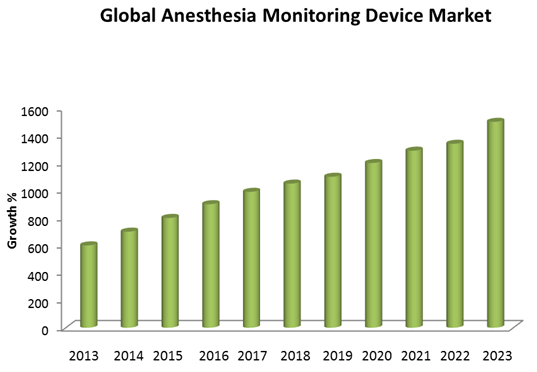
US Anesthesiology Service Market Report:
The report entitled “The US Anesthesiology Service Market (2018-2022 Edition)” provides analysis of the US anesthesia service market, with detailed analysis of market size and value, market share and economic impact of the industry. The analysis includes the market by value, by share of players, by segments, etc.
Growth of the overall US anesthesia service market has also been forecasted for the years 2018-2022, taking into consideration the previous growth patterns, the growth drivers and the current and future trends.
Number of Anesthesiologists all over the Globe:
The World Federation of Societies of Anaesthesiologists has revealed a survey that, the number of anesthesiologists worldwide. They found that wealthy countries, like the U.S. and Germany, have 20 to 30 anesthesiologists for every 100,000 people; but in sub-Saharan Africa and parts of Asia, there are often fewer than one for every 100,000 people. Here's a global sampling: Switzerland 54.22 per 100,000; Russian Federation: 20.91 per 100,000; United States: 20.82 per 100,000; South Africa: 16.18 per 100,000; Canada: 12.42 per 100,000; Cuba: 15.68 per 100,000; Mexico: 6.42 per 100,000; China: 5.12 per 100,000; Namibia: 4.7 per 100,000; Thailand: 2.45 per 100,000; Peru: 1.76 per 100,000; Gabon: 1.28 per 100,000; India: 1.26 per 100,000; Gambia: 0.1 per 100,000.
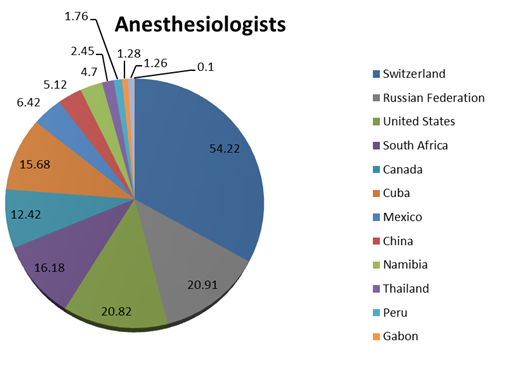
The Global General Anaesthesia drugs market
The global general anaesthesia drugs market is estimated to expand at a CAGR of 3.8% during the forecast period. Moreover, global general anaesthesia drugs markets value is expected to increase to US$ 5,549.7 Mn by 2025 end.
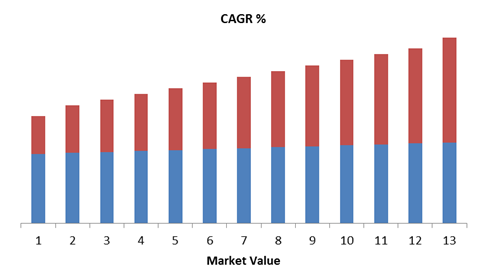
Why Zurich?
The city of Zurich, a global center for banking and finance, lies at the north end of Lake Zurich in northern Switzerland. The picturesque lanes of the central Altstadt (Old Town), on either side of the Limmat River, reflect its pre-medieval history. Waterfront promenades like the Limmatquai follow the river toward the 17th-century Rathaus (town hall).With its location right in the heart of Switzerland, Zurich is a modern, cosmopolitan hub that is regularly ranked as one of the world's top cities for quality of life. ... It's also considered Switzerland's trend-setting city thanks to its highly innovative arts and creative scene
Tourist Attractions:
- Old town.
- uetliberg.
- Lake Zurich and Burkliplatz.
- Kunsthaus Zurich( Museum of fine arts).
- Bahnhofstrasse and the Bahnhof.
- Fraumunster.
Why to Attend?
Doctors, patients and health care workers consider the Anesthesia is as an essential tool to improve the general health status of the populace. The extents of people who undergo surgeries are expected to increase in future according a recent statistical survey. Realizing this imperative, Conference series is set to organize International Conference on Anesthesia and Anesthesiology this year with a view to enhance research and promote awareness aiming in developing solutions for the challenges encountered. Anesthesia 2021 will comprise of many leading keynote speakers and session speakers who will be delivering their speech on the current research topics of Anesthesia and Anesthesiology. The young researchers and the student participants will gain the opportunity to grab the Best Poster Award by presenting their work as a poster presentation and Young Researcher Forum.
Key players for global anesthesia drugs market:
- Abbott Laboratories (US)
- Astrazeneca PLC (British-Swedish)
- Baxter International Inc. (US)
- Hospira, Inc. (US)
- F. Hoffmann-La Roche Ltd. (Switzerland)
- Hikma Pharmaceuticals PLC (UK)
- AbbVie Inc. (US)
- Fresenius Se & Co. Kgaa (Germany).
Various Societies of Anesthesia
1. International Societies for Anesthesia:
- Association for Low Flow Anaesthesia
- European Society of Intensive Care Medicine
- International Anesthesia Research Society
- International Association for the Study of Pai
- International Spinal Injection Society
- World Federation of Societies of Anesthesiologists
- Australian and New Zealand College of Anaesthetists
- International Trauma Anaesthesia and Critical Care Society
- Society for Neurosurgical Anaesthesia and Critical Care
- World Congress on Pain
- World Societies for Technology in Anesthesia
2. American Anesthesia Association
- American Association of Nurse Anesthetists
- American Pain Society
- American Society of Anesthesia Technologists and Technicians
- American Society of Anesthesiologists
- American Academy of Anesthesiologists Assistants
- American Society of Critical Care Anesthesiologists
- Ophthalmic Anesthesia Society
- Society for Computing in Anesthesiology
- Society for Office Based Anesthesia
- Society for Technology in Anesthesia
- Society of Cardiovascular Anesthesiologists
- Society for Obstetrical Anesthesia and Perinatology
- Society of Critical Care Medicine
3. Europeans Societies:
- Anaesthetic Research Society
- Anaesthesia Research Trust
- Association for Cardiothoracic Anaesthetists
- Association of Paediatric Anaesthetists
- Age Anaesthesia Association
- British Medical Acupuncture Society
- British Association of Orthopaedic Anaesthetist
- Committee of Anaesthetists in Training of Sheffield (CAT)
- Northern Ireland Society for Computing in Anaesthesia
- Royal College of Surgeons of Ireland
- Vascular Anaesthesia Society of Great Britain and Ireland
- Neuroanaesthesia Society of Great Britain & Ireland
Conference Series LLC LTD has been a great influence in running international anesthesiology meetings for four years and ready to elaborate its spectrum in Asia, America, Europe countries. Conference series successfully conducted past meetings in major cities like Ireland, San Antonio, London and Chicago with great success.
Conference Series LLC LTD is pleased to announce the commencement of the 6th International Conference on Anesthesia in Zurich, Switzerland during September 22-23, 2021. Theme of the conference is “New Frontiers in Anesthetic field.” The purpose of the conference is to elucidate the advanced techniques in anesthesia and analgesia. This is an opportunity to meet and network with renowned Anesthesiologists, pharmacists and allied health professional from around the world and listen to top speakers on new development that will advance the future of Anesthesiology.
Past Conference Report of “4th International Conference on Anesthesia”
4th International Conference on Anaesthesia was successfully hosted by Conferenceseries LLC Ltd in Valencia, Spain during July 01-02, 2019. The conference was organized around the theme “Current Research and New Frontiers in Anesthetic field” with the purpose to strengthen the future of Anesthesia and Surgery.
Active participation and generous response was received from the Organizing Committee Members, Editorial Board Members of Journals as well as from Eminent Scientists, Talented Researchers and Young Student Community. All the support and cooperation from the Organizing Committee Members, Researchers and the Speakers had made Anesthesia 2019 a successful event.
The highlights of the meeting were the enlightening keynote lectures from:
- Juan A. Mira, Hospital of Clínica Doctor Mira, Plastic Surgeon, Spain on the topic “Augmentation mammaplasty: a 40 years’ experience”
- Ernesto Delgado Cidranes, Complutense University Madrid, Spain on the topic “Real-time neuroaxial inflammation in lumbar pain through PET-MRI: Looking at the future”.
- Vakhtang Shoshiashvili, Research Institute of Clinical Medicine, European University, Georgia, on the topic “Transnasal sphenopalatine ganglion block for postdural puncture headache treatment after spinal anesthesia – case report”
- Ashraf EL-Molla, Prince Sultan Military Medical City, Saudi Arabia, on the topic “Victims and culprits of evidence biased and chaotic medicine presented by hemodynamic monitors”.
- Ulf Thorsten Zierau, Saphenion, Germany, on the topic “Our experiences in 7 years sealing veins-a follow- up study conducted on 2250 truncal saphenous veins in 1250 cases”.
- Sang-Hwan Do, Seoul National Univeristy, South Korea, on the topic “Effects of intraoperative magnesium sulphate administration on the incidence of chronic postsurgical pain in patients undergoing total knee arthroplasty”.
The conference proceedings were carried out through various scientific sessions and plenary lectures:
- Title: Telemedicine and telerobotics: From science fiction to reality by Melissa G Medina, University of Illinois College of Medicine at Peoria, USA
- Title: Anaesthesia for robotic surgery: Patient positioning, ergonomics and clinical pearls by Shagun Bhatia Shah, Rajiv Gandhi Cancer Institute and Research Centre, India
- Title: Review and update: robotic transanal surgery (RTAS) by Steven S Tsoraides, University of Illinois-College of Medicine at Peoria, USA
- Title: Treatment of proximal humeral fractures-osteosynthesis and alloplasty of the shoulder joint by Karol Szyluk, District Hospital of Orthopedics and Trauma Surgery, Poland
- Title: Management of primary graft dysfunction after heart transplantation by Nikola Bradic, University Hospital Dubrava, Croatia University North, Croatia
- Title: Thoracoscopic video-assisted sympathicotomy for the treatment of hyperhidrosis: 20 years’ experience with minimally invasive technique, by Lago G, University of Parma, Italy University of Rome Tor Vergata, Italy.
- Title: 7 years’ experience in migraine surgery with minimally invasive and endoscopic technique, by Edoardo Raposio, University of Parma, Italy Tor Vergata University of Rome, Italy.
- Title: Novel approaches to anesthesia in electroconvulsive therapy, by Mohsen Jahandideh, Isfahan University of Medical Sciences, Iran
- Title: Surgical management and outcome of complex bile duct injury after laparoscopic cholecystectomy, by Yamin Zheng, Xuanwu hospital-Capital Medical University, China
- Title: Pleth varibility index based intraoperative fluid management in head and neck free flap reconstructive surgeries, by Itee Chowdhury, Rajiv Gandhi Cancer Institute, New Delhi, India
- Title: Simple and effective profiloplasty by Juan A. Mira, Clinica Doctor Mira, Spain
- Title: Maintenance and governance of perioperative informatics management systems by Seshadri Mudumbai, Stanford University School of Medicine, USA
- Title: Arthroscopic Bankart lesion repair with a suture anchor – long term results by Karol Szyluk, District Hospital of Orthopedics and Trauma Surgery, Poland
- Title: Evolution and literature review of robotic general surgery resident training: 2002-2018 by David L Crawford, University of Illinois-College of Medicine, USA
- Title: Artificial intelligence in Anesthesiology by Harry Mc Grath, University Hospital Limerick, Ireland
- Title: Vestibular profile in auditory neuropathy spectrum disorder by Tejaswini Patel,, Narayana Health City, India
- Title: Low Level Laser Therapy and Neuromuscular Electrical Stimulation in ENT Rehabilitation: New therapeutic resource by Andrea Signoretti, University Center São Camilo, Brazil
- Title: A Laser-Patterned Microcoagulation (LPM) Technology: Clinical study of gingiva regeneration in implantation zone by Ekaterina A Zernitckaia, St. Petersburg State Medical University, Russia
- Title: The Effect of Radiofrequency ablation and Mitomycin C in the surgical management of Human tymapnostomy, could it be the end of the Grommet era? by Shaimah Najmussaquib, Taiba Hospital, Kuwait
We are glad to inform that all accepted abstracts for the conference have been indexed in our “Journal of Anesthesia & Clinical Research”
We sincerely thank the Organizing Committee Members, Participants and Media Partners for their gracious presence and generous support, without which the conference would not have reached the pinnacle of success. With the unique feedback from the conference, Conference Series LLC would like to announce the commencement of the “6th International Conference on Anaesthesia” during September 22-23, 2021 in Zurich, Switzerland
Let us meet again @ Anesthesia 2021
Conference Highlights
- Anesthetics
- Sedation
- Ambulatory Anesthesia
- Pediatric Anesthesia
- Spinal Anesthesia
- Epidural Anesthesia
- Anesthetic Adjunct
- Steroid Anesthetics
- Benefits of Anesthesia
- Anesthesia Equipment
- Anxiolytics
- Narcotics
- Paralytics
- Pain
- Analgesia
- NSAIDs
- Amnesia
- Postoperative Nausea and Vomiting
- Acute Stress Response
- Peripheral Nerve Block
- Mortality
- Emergence
- Coma
- Animal Anesthesia
To share your views and research, please click here to register for the Conference.
To Collaborate Scientific Professionals around the World
| Conference Date | September 22-23, 2021 | ||
| Sponsors & Exhibitors |
|
||
| Speaker Opportunity Closed | |||
| Poster Opportunity Closed | Click Here to View | ||
Useful Links
Special Issues
All accepted abstracts will be published in respective Our International Journals.
- Anesthesia & Clinical Research
- Analgesia & Resuscitation : Current Research
- Surgery: Current Research
Abstracts will be provided with Digital Object Identifier by





